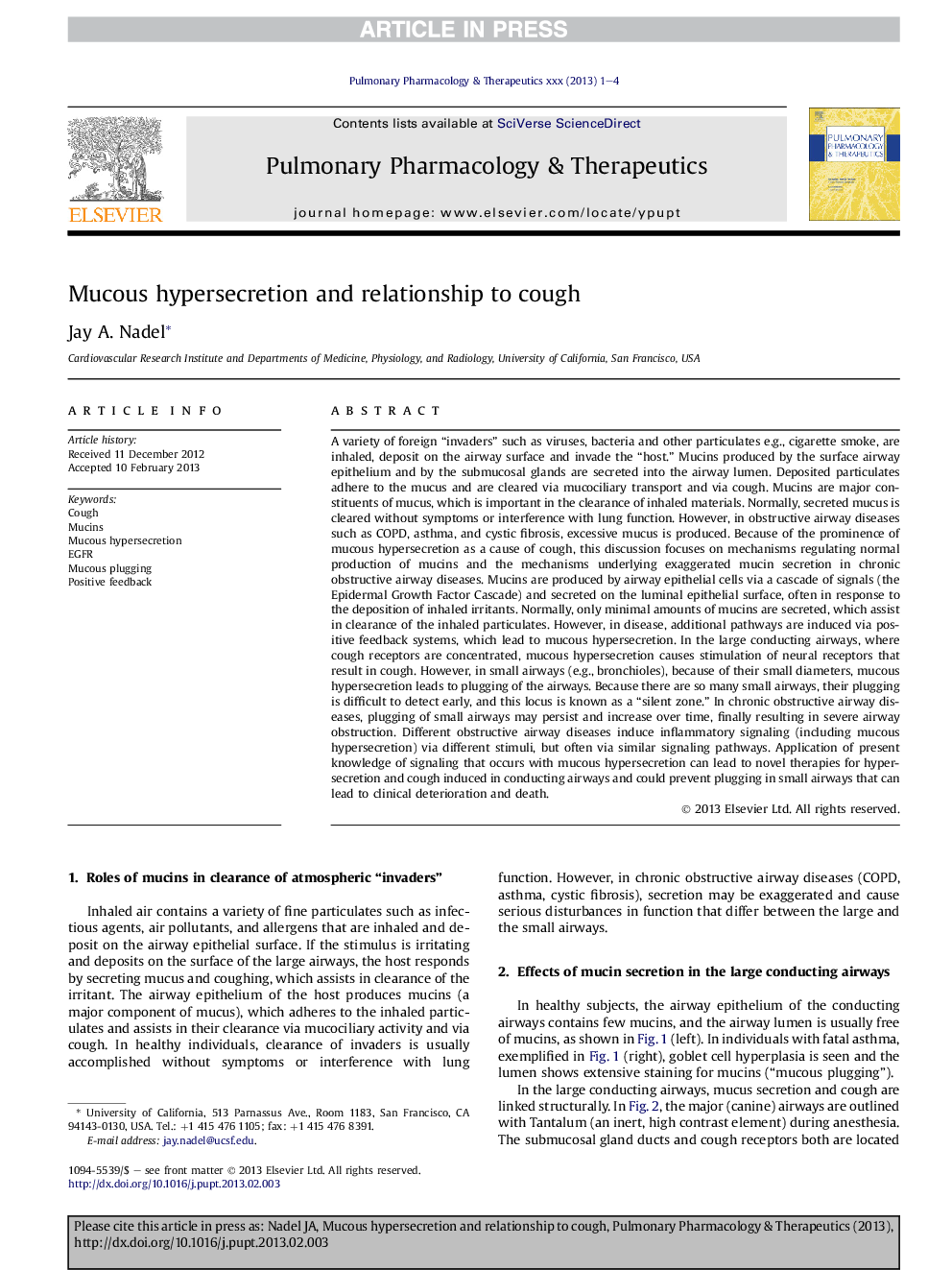| کد مقاله | کد نشریه | سال انتشار | مقاله انگلیسی | نسخه تمام متن |
|---|---|---|---|---|
| 5845781 | 1128314 | 2013 | 4 صفحه PDF | دانلود رایگان |
عنوان انگلیسی مقاله ISI
Mucous hypersecretion and relationship to cough
دانلود مقاله + سفارش ترجمه
دانلود مقاله ISI انگلیسی
رایگان برای ایرانیان
موضوعات مرتبط
علوم پزشکی و سلامت
پزشکی و دندانپزشکی
پزشکی ریوی و تنفسی
پیش نمایش صفحه اول مقاله

چکیده انگلیسی
A variety of foreign “invaders” such as viruses, bacteria and other particulates e.g., cigarette smoke, are inhaled, deposit on the airway surface and invade the “host.” Mucins produced by the surface airway epithelium and by the submucosal glands are secreted into the airway lumen. Deposited particulates adhere to the mucus and are cleared via mucociliary transport and via cough. Mucins are major constituents of mucus, which is important in the clearance of inhaled materials. Normally, secreted mucus is cleared without symptoms or interference with lung function. However, in obstructive airway diseases such as COPD, asthma, and cystic fibrosis, excessive mucus is produced. Because of the prominence of mucous hypersecretion as a cause of cough, this discussion focuses on mechanisms regulating normal production of mucins and the mechanisms underlying exaggerated mucin secretion in chronic obstructive airway diseases. Mucins are produced by airway epithelial cells via a cascade of signals (the Epidermal Growth Factor Cascade) and secreted on the luminal epithelial surface, often in response to the deposition of inhaled irritants. Normally, only minimal amounts of mucins are secreted, which assist in clearance of the inhaled particulates. However, in disease, additional pathways are induced via positive feedback systems, which lead to mucous hypersecretion. In the large conducting airways, where cough receptors are concentrated, mucous hypersecretion causes stimulation of neural receptors that result in cough. However, in small airways (e.g., bronchioles), because of their small diameters, mucous hypersecretion leads to plugging of the airways. Because there are so many small airways, their plugging is difficult to detect early, and this locus is known as a “silent zone.” In chronic obstructive airway diseases, plugging of small airways may persist and increase over time, finally resulting in severe airway obstruction. Different obstructive airway diseases induce inflammatory signaling (including mucous hypersecretion) via different stimuli, but often via similar signaling pathways. Application of present knowledge of signaling that occurs with mucous hypersecretion can lead to novel therapies for hypersecretion and cough induced in conducting airways and could prevent plugging in small airways that can lead to clinical deterioration and death.
ناشر
Database: Elsevier - ScienceDirect (ساینس دایرکت)
Journal: Pulmonary Pharmacology & Therapeutics - Volume 26, Issue 5, October 2013, Pages 510-513
Journal: Pulmonary Pharmacology & Therapeutics - Volume 26, Issue 5, October 2013, Pages 510-513
نویسندگان
Jay A. Nadel,